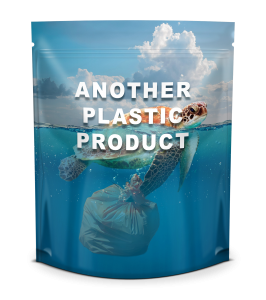In our previous post, we mentioned that we were in the midst of a packaging update. If you have ordered from us recently, you’ve likely received one of the new pouches.

We are now transitioning all of our meals in the new packaging.
Many of you have requested our food be packaged in heat-safe “rehydration pouches” since our inception in 2010. Our resistance stemmed from the idea that the industry standard, ‘add hot water to the pouch’, was excessively wasteful and a potential health hazard. Compact and simplistic packaging is a significant component of reducing waste and keeping costs low. While our packaging did get larger, it is still compact when compared to other brands in the backpacking food industry.
Safe and sustainable packaging is something we genuinely care about.
Our new pouches are made from a kraft paper exterior that is lined with rigid plastic that is safe for boiling water and heating up food. Because it uses paper on the outside, it is less likely to burn your hands when holding the hot pouch. The plastic liner keeps it watertight and heat-safe. The downside is that it is not easily recyclable due to the mixed material structure (a “watertight” solution as of 2020 requires plastic). The good news is that packaging continues to evolve and hopefully will soon change.
As wilderness lovers, most of us are concerned about the waste generated from disposable one-time-use packaging, which often comes from plastic.

Plastic is one of the greatest environmental challenges we face in the world today. It is rapidly accumulating in every corner of the Earth. Tiny bits of plastic are floating in oceans and other waterways where it is eaten by fish and birds. As a constituent of the outdoor industry, all of us need to do our part to reduce our impacts, certainly not make it worse.
Yet, plastic dominates backpacking food packaging because alternative materials don’t function as well as their plastic counterparts. All aluminum is excellent for long-term food storage but not for heating and handling. Compostable plant-based materials not only degrade during storage but can’t sustain moisture and heat. With all paper packaging, moisture from the air migrates right through the paper, impacting food safety. Thus, food packaging is typically layered with different types of materials, usually plastics or aluminum, to provide improved food protection and shelf life.
But, plastic itself isn’t really the problem — it’s the mixing of different materials. Once fused together, separation becomes difficult and costly, making it impractical for reuse and aftermarket resale. This multi-layer structure is what prevents the food packaging from being recycled (including store-drop off recycling) and composting.
The unfortunate reality is that the economics of identifying and sorting plastic for recycling to a resellable polymer is not there. It’s often cheaper for plastic manufacturers to make new plastics directly from oil or gas materials to use recycled polymers. In the food and beverage industry, there are also restrictions on how much recycled (second-hand) plastic content is allowed. Otherwise, food safety can become compromised. In other words, most plastic packaging likely ends in a landfill or is incinerated because there is no end market for it.
Sure, there are ways to acknowledge this dilemma. Some companies will partner with 3rd party organizations so the materials are broken down into regrind where it can be up-cycled for other purposes, such as decks, playground mulch, or even textiles. This solution works if 1) these specialized recyclers are within major population centers so that the product doesn’t travel far to get there, AND 2) there is a secondary market willing to pay a premium price for it.
We need a better long-term solution. The food packaging used today is not a sustainable solution to our environmental problem.
Are there more environmentally-friendly packaging options available? Yes.
Packaging that can also safely hold hot and wet food without melting/leaking/disintegrating? Not yet.
Unfortunately, there is not a viable solution yet for sustainable packaging in the backpacking food industry that meets all of the above requirements. We’ll continue to search for more sustainable packaging. For now, our approach is to minimize our plastic use as we wait for better alternatives.